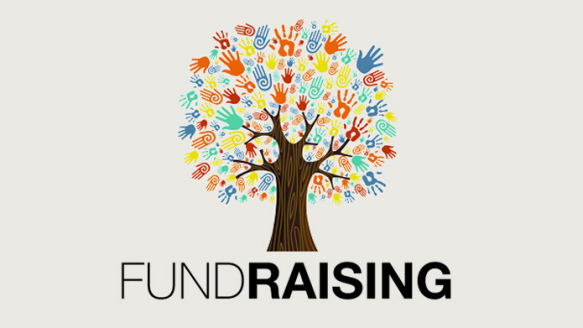Online Fundraising: Proven Methods to Raise More Funds for Your Nonprofit
Online Fundraising: Proven Methods to Raise More Funds for Your Nonprofit
Blog Article
The Duty of Area Interaction in Nonprofit Fundraising: Building Lasting Relationships for Lasting Support
Neighborhood involvement is progressively identified as a crucial component of effective not-for-profit fundraising. The approaches and techniques utilized to engage communities differ extensively, raising important concerns regarding efficiency and effect.
Understanding Neighborhood Engagement
Community engagement is a crucial element of successful not-for-profit fundraising efforts. Nonprofits have to recognize vital stakeholders-- such as area participants, regional organizations, and other organizations-- to produce efficient involvement methods.
Effective neighborhood engagement is asserted on active listening and responsiveness to the requirements and interests of the area. This procedure includes soliciting comments, understanding neighborhood characteristics, and ensuring that the organization's goal lines up with neighborhood priorities. Engaging the community can take different types, including public conferences, volunteer possibilities, and partnership initiatives, each created to encourage involvement and financial investment in the organization's objectives.
Moreover, neighborhood involvement should be come close to as a continuous dialogue instead of an one-time effort. By promoting an inclusive environment where neighborhood voices are listened to and valued, nonprofits can build a solid foundation for future fundraising ventures. Eventually, a deep understanding of community involvement encourages organizations to develop authentic links that boost their general performance and sustainability.
Benefits of Strong Relationships
Strong relationships formed with area interaction return numerous advantages for nonprofit fundraising efforts. First and primary, these partnerships foster count on and integrity, necessary parts in encouraging benefactors to contribute. When potential advocates see a nonprofit actively associated with their area, they are much more most likely to count on its mission and influence.

In addition, these relationships promote effective interaction. Nonprofits can utilize their connections to share stories of influence, updates, and requires, making certain that advocates remain enlightened and involved. This open line of interaction not only enhances bonds yet also motivates word-of-mouth promotion, increasing the not-for-profit's reach.
Last but not least, solid neighborhood ties can bring in brand-new partners and enrollers. Organizations and individuals are more likely to align with organizations that show purposeful area involvement, supplying added resources and assistance that can significantly boost fundraising capabilities. Therefore, cultivating robust relationships with neighborhood involvement is important to a nonprofit's long-term fundraising success.
Approaches for Efficient Interaction
Exactly how can nonprofits properly involve their areas to improve fundraising efforts? Routine updates, involving content, and calls-to-action can galvanize neighborhood interest and engagement.
Second, organizing community occasions, such as workshops, volunteer opportunities, or fundraising drives, promotes face-to-face communication, allowing nonprofits to display their influence and efforts. These occasions not only elevate funds yet also grow relationships and enable community participants to involve straight with the reason.
Third, carrying out personalized interaction techniques can boost involvement. Tailoring messages to specific contributor sections based upon interests and past contributions fosters a feeling of belonging and financial investment in the company's goal.
Finally, creating collaborations with neighborhood organizations and neighborhood leaders can magnify outreach efforts. Collaborative initiatives can enhance presence and trustworthiness, demonstrating a cumulative dedication to the neighborhood's well-being. By incorporating these approaches, nonprofits can construct lasting partnerships that improve fundraising initiatives and drive sustainable support.
Gauging Interaction Success
While involving the community is critical the original source for successful nonprofit fundraising, measuring the effectiveness of these involvement initiatives is just as crucial. Establishing clear metrics allows companies to evaluate exactly how well they are attaching with their audience and achieving their fundraising objectives. Secret performance indicators (KPIs) such as contributor retention rates, volunteer engagement degrees, and interaction on social networks platforms offer tangible information for examination.

Consistently evaluating these metrics makes it possible for organizations to pivot their strategies when needed, guaranteeing that area involvement stays aligned with their general mission. In addition, sharing these results with stakeholders fosters transparency and builds trust, motivating further area participation. Eventually, a robust measurement structure not just notifies future fundraising efforts however likewise reinforces the relationship between the nonprofit and its supporters, preparing for sustainable success.
Study in Area Effect
Numerous study show the profound influence that area interaction can have on not-for-profit fundraising success. One significant instance is the "Food for Idea" effort, where a regional food financial institution partnered with schools and businesses to host area suppers. These occasions not just increased funds yet likewise promoted a feeling of belonging among individuals, substantially boosting donor retention prices.
Another compelling case is the "Green Spaces Task," which involved regional homeowners in the revitalization of metropolitan parks. This initiative not only amassed financial backing from neighborhood companies yet additionally grew a volunteer base that added to recurring maintenance and shows. The sense of ownership and pride amongst neighborhood members equated into sustained payments.
In the realm of arts, the "Art for All" project effectively engaged neighborhood musicians and clients to produce collective art installments, causing enhanced visibility and donations for a regional arts not-for-profit.
These examples highlight that when nonprofits prioritize community involvement, they can develop long lasting connections that improve fundraising efforts, guaranteeing lasting support and cultivating a vivid community culture. Such have a peek here cases demonstrate that community interaction visit this page is not simply a strategy yet a vital column of nonprofit success.
Conclusion
To conclude, neighborhood engagement is integral to the success of not-for-profit fundraising efforts. By fostering solid relationships with local stakeholders, companies improve depend on and integrity, resulting in enhanced benefactor retention and commitment. Executing reliable involvement approaches and measuring their impact guarantees that nonprofits can adapt and prosper. Ultimately, a robust foundation of area support not just amplifies fundraising potential yet additionally grows a culture of collaboration, essential for attaining long-term business goals and sustaining purposeful effect.
Nonprofits need to identify essential stakeholders-- such as community members, neighborhood businesses, and various other companies-- to develop reliable engagement techniques.

In conclusion, neighborhood engagement is essential to the success of not-for-profit fundraising initiatives.
Report this page